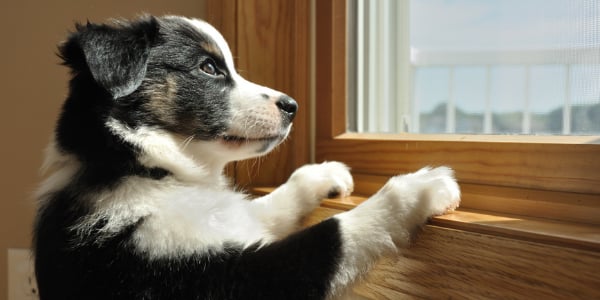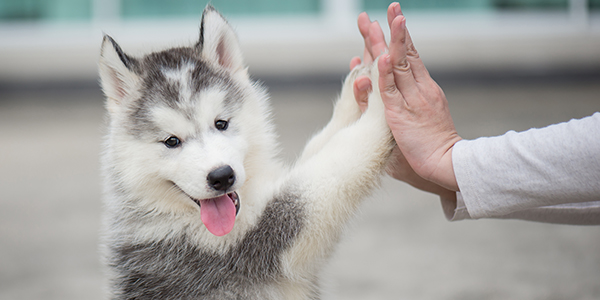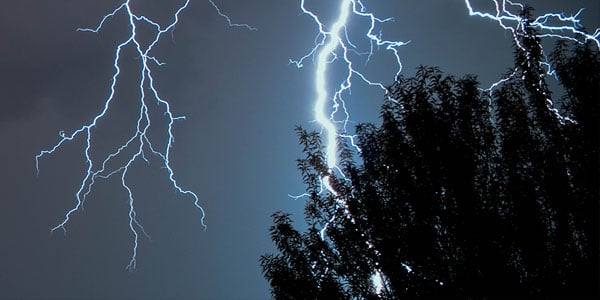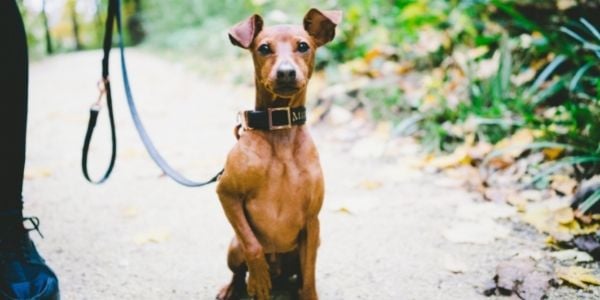
Puppy Socialization - Fireworks Resources | Preventive Vet
Is your dog scared of fireworks? Learn how to desensitize your puppy to the sound of fireworks in a proactive and positive way to prevent fireworks phobia.

Helping your puppy acclimate to different sounds goes a long way in helping them feel comfortable, less stressed when they hear a sudden noise, and prevent unwanted behaviors such as alert barking. Some sounds are more sustained, such as traffic noise, while others are shorter and more startling, like a car door slammed shut. Focus first on the sounds that are prevalent in your home environment.
Remember — low and slow, short and sweet. Start with the volume low, slowly increasing it over time as long as your puppy doesn't show signs of stress. Keep these sessions short and pair them with your dog's favorite things and activities.
Use interactive toys and puzzles, have a short positive reinforcement training session, play with their favorite tug toy, have a snuggle session, or use a stuffed Kong, Toppl toy, or snuffle mat to feed them their usual meal.
Step One: Puppy is eating their meal from a stuffed toy.
Step Two: Turn on traffic sounds at the lowest volume.
Step Three: Evaluate your puppy's body language. Did they notice the sound but go right back to eating? Or did they stop eating and exhibit stressed body language?
Step Four: Adjust the volume of the traffic sounds accordingly. If they startled to the sound, turn it off and try again later (with higher value treats or during playtime). If they noticed it but went right back to eating, continue playing the traffic noise at its current volume or consider slightly increasing the volume.
Step Five: As they finish up their meal, turn off the traffic noise. One sound socialization session complete!
Here are two real-world examples of sound desensitization with Fozzie Bear, a nine-week-old Cardigan Corgi. We live in the city, so we spend time sitting on our front patio, having some snuggle time (sometimes treats are involved), and just listening to the world around us. You'll notice that he alerts to our neighbors talking, but he gets some scratches and pets and settles back down on my lap without becoming more stressed. If he had started to become restless or looking like he was about to bark, I would have gone inside.
Some sounds I notice in the clip include: women's voices, freeway sounds with trucks and cars, and a plane passing overhead.
I took advantage of some house cleaning happening in the background to desensitize Fozzie to the vacuum cleaner. Watch the second video, where I play tug with one of his favorite squeaky toys while the vacuum is on in the other room.
It's completely normal for a puppy to startle if there's a sudden and loud sound (we do it, too!). It's all about fostering a quick recovery after being startled, helping your puppy learn how to cope and "bounce back."
If your puppy startles to a sudden noise, or shows fear and stress with a more sustained sound, be aware of your reaction. Your puppy looks to you for cues on how to react to sudden environmental changes.
Stay calm and say "It's okay!" in a calm, happy voice. It's okay to comfort your puppy, just don't overdo it. Comfort, don't coddle!
If the sound was sudden and your puppy reacted, toss some high value treats to them right afterwards if you have them. This can build the association that a sudden noise predicts chicken raining from the sky.
If the sound is sustained, turn it off (if you can), move to an area that's less loud, or completely leave the area. Make a note of the sound that your puppy reacted to, and then make a plan on proactively exposing them to this sound in a more controlled way (at a lower volume, paired with higher value treats or experiences, or at shorter durations).

Is your dog scared of fireworks? Learn how to desensitize your puppy to the sound of fireworks in a proactive and positive way to prevent fireworks phobia.

You want to start socializing your puppy right away. Learn how to do it safely and ideas for socialization before puppy vaccines are completed.

Set yourself up for success with your new dog or puppy. Need training tips? Looking for vet-recommended supplies? We've got you covered!

Want to help your dog not be scared of thunder? Pair the sound with positive experiences to help your puppy learn that thunderstorms are no big deal.

Tips from a certified dog trainer to help your dog if they missed early socialization. It's not too late to help your dog feel more confident and less anxious.
